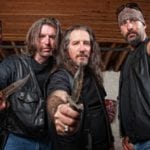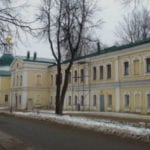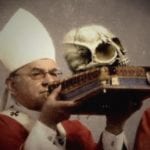 Humans
Humans  Humans
Humans  Movies and TV
Movies and TV The 10 Most Heartwarming Moments in Pixar Films
 Travel
Travel Top 10 Religious Architectural Marvels
 Creepy
Creepy 10 Haunted Places in Alabama
 History
History Top 10 Tragic Facts about England’s 9 Days Queen
 Food
Food 10 Weird Foods Inspired by Your Favorite Movies
 Religion
Religion 10 Mind-Blowing Claims and Messages Hidden in the Bible Code
 Facts
Facts 10 Things You Never Knew about the History of Gambling
 Weird Stuff
Weird Stuff 10 Cool and Creepy Facts about Collecting Tears
 Humans
Humans The Ten Most Lethal Gunslingers of the Old West
 Humans
Humans Ten Historic Men Who Deserve Way More Credit Than They Got
 Movies and TV
Movies and TV The 10 Most Heartwarming Moments in Pixar Films
 Travel
Travel Top 10 Religious Architectural Marvels
Who's Behind Listverse?

Jamie Frater
Head Editor
Jamie founded Listverse due to an insatiable desire to share fascinating, obscure, and bizarre facts. He has been a guest speaker on numerous national radio and television stations and is a five time published author.
More About Us Creepy
Creepy 10 Haunted Places in Alabama
 History
History Top 10 Tragic Facts about England’s 9 Days Queen
 Food
Food 10 Weird Foods Inspired by Your Favorite Movies
 Religion
Religion 10 Mind-Blowing Claims and Messages Hidden in the Bible Code
 Facts
Facts 10 Things You Never Knew about the History of Gambling
 Weird Stuff
Weird Stuff 10 Cool and Creepy Facts about Collecting Tears
 Humans
Humans The Ten Most Lethal Gunslingers of the Old West
10 Secret Outlaw Languages
Outsiders need a way to communicate with each other in secret. It is essential to their survival. The exact number of “cryptolects”—secret languages known only to the initiated—is unknown, but many have influenced popular vocabulary. Make no mistake: Outlaws move the mainstream.
10Polari
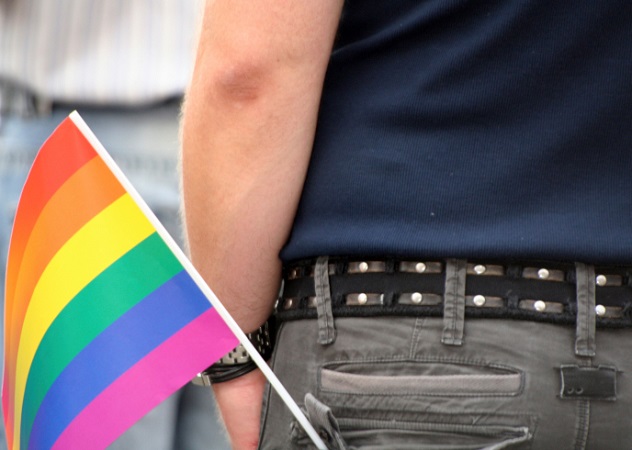
The origins of this UK cryptolect are shrouded in mystery. One theory is that British sailors crafted this tongue by combining the Mediterranean lingua franca with local slang. Others claim it began as the jargon of 19th-century Italian carnies. What everyone agrees on is that Polari became the insider dialect of English theater. From the stage, it became a secret code among British homosexuals. Given that homosexuality was illegal in England until 1967, by any definition, Polari is an outlaw language.
BBC Radio introduced Polari to the masses in the 1960s with a flamboyant comedy duo named Julian and Sandy, who frequently lapsed into the language. The couple never discussed sexual orientation, but they didn’t need to. Polari was a “wink” to those in the know.
Polari is rarely spoken today, but it does occasionally find its way into art. Morrissey’s 1990 single “Piccadilly Palare” explicitly references the cryptolect. The alternative spelling of “Palare” reflects that there is no proper way to write Polari. This is a spoken language.
Polari is not the only cryptolect associated with gay subculture in the Anglo world. Gayle is an Afrikaans-based dialect used principally by English-speaking urban homosexual men in South Africa. Given the connection between South Africa and the UK, it is not surprising that many Polari words have found their way into Gayle. South Africa boasts a second cryptolect for homosexual Bantu speakers called IsiNgqumo. While gay rights are protected under the South African constitution, the murder of homosexual men and “corrective rape” of lesbians reveals a powerful need for these societal outsiders to communicate in secret.
9Hobo Hieroglyphics
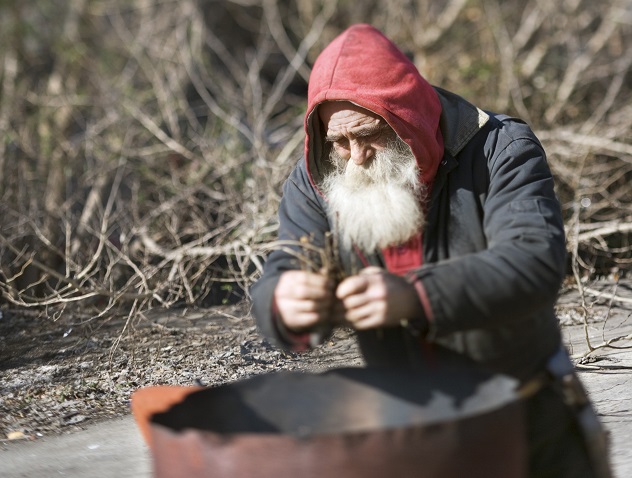
Hobos appeared on the American scene after the Civil War when itinerant men took to the rails in search of work. The phenomenon reached peak numbers during the Great Depression, when the dispossessed flooded hobo “jungles.” These men led nomadic existences, taking odd jobs no one else wanted. They were admired, pitied, feared, and idolized. Author John Steinbeck called them “the last free men.”
In order to exchange information, hobos developed a language of coded symbols. These hieroglyphics signified danger, opportunity, and even nuanced recommendations such as “food for religious talk.” The signs are intentionally abstract so that they could be written out in the open without fear of being deciphered by non-hobos. This cryptic language proved essential to hobo survival in the unforgiving world of train-hopping.
Hobos are rare today, since train companies have tightened their security. Those who remain are frequently lambasted as “showbos”—that is, interested in exploiting the lifestyle for its pageantry in festivals rather than embracing the cold, hard reality of life on the rails. As the hobo phenomenon fades, so does the usage of their coded language, yet these symbols still resonate deeply. Hobo hieroglyphics inspired painter Jean-Michel Basquiat, who counted a dictionary of these symbols among his favorite books. He incorporated their imagery and poetry (“nothing to be gained here”) into his compositions.
8Lunfardo

Lunfardo originated in the Buenos Aires underworld as a secret language to confound outsiders. With time, this cryptolect emerged from prisons and criminal dens to become the definitive Buenos Aires dialect, cutting across class lines and oozing across borders. To some linguistic formalists, Lunfardo is an embarrassment—a lowbrow, delinquent-tinged slang best avoided by the well-heeled. To others, this mainstream cryptolect defines Argentinian culture.
Lunfardo has a gigantic vocabulary, with contributions from many languages beyond its Spanish core. Northern Italian dialects are well represented, plus additions from English, French, and Gypsy tongues. Much of the vocabulary is of unknown origin. Linguists suspect pure invention.
Several features distinguish Lunfardo. “Verse” masks standard words by rearranging syllables, and metaphor abounds. There are countless terms for categories of criminals, their prey, and shady activities. Lunfardo is a sensual language that is laden with words for men, women, and body parts. It should come as no surprise that it is the lingua franca of tango, and even fluent Spanish speakers have trouble decoding the genre’s lyrics without knowledge of Lunfardo. The popularity of this music has spread this once-secret language around the globe.
7Peddler’s French
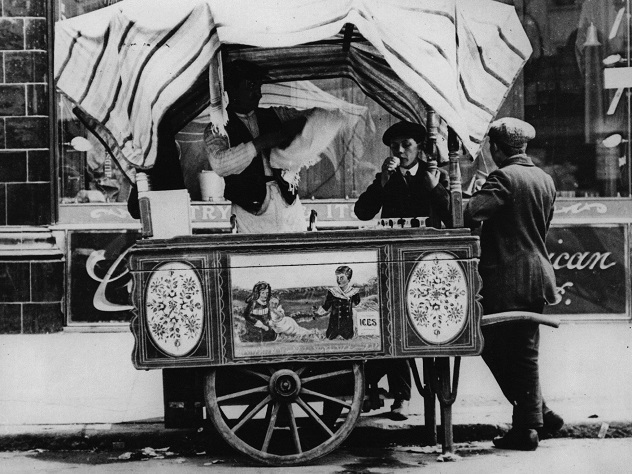
In 1567, Thomas Harman made the first known reference to Peddler’s French (aka Thieves Cant) in A Caveat or Warning for Common Curestors, Vuglarly Called Vagabonds. This coded vernacular was the secret language of the British underworld, a lingua franca among thieves, tramps, and beggars.
“French” does not imply that it comes from the land of the Gauls but that it is foreign. Its origins are unclear. Some, like Harman, suggest a Romani pedigree. The most colorful origin story is that the secret code was created by none other than the King of the Gypsies at a cave called The Devil’s Arse. Others suggest Romani origins are impossible, given that the language was spoken 50 years prior to the arrival of the Romani in England. Regardless, there is no doubt the language has been influenced by the nomadic tongues of Northern India.
The term “peddler” has criminal overtones in England. Independent merchants, once known as “peddlers,” were prosecuted in order to ensure a crown-approved monopoly. Roving merchants’ overhead was lower than rooted shopkeepers, whom they were able to undersell. The authorities couldn’t stand for this unauthorized competition, so the peddlers were officially classified as “rogues.”
The idea that this cant is a language separate from English is not entirely accurate. Instead, it exchanges words and expressions with coded alternatives to confound outsiders. It would be more accurate to refer to it as a nuanced slang with a giant, labyrinthine vocabulary.
Reports indicate that this language is still used in UK prisons. This coded terminology is used in contraband smuggling today for exactly the same reason it was employed in Thomas Harman’s day. Correctional officers have seized correspondence referring to drugs by their Thieves Cant translation.
6Russian Criminal Tattoos

Tattoos have been with us from the dawn of history. The oldest European mummy, Otzi, had tattoos, and Egyptian funerary figures bear body art. Romans banned tattoos, believing they sullied the harmony of the human body. However, when they fought inked-up Britons, their story changed, and Roman doctors soon mastered the art. Crusaders’ tattoos signified they were Christian, with the implicit request for a proper burial should they fall on the battlefield. After the Crusades, they vanished from the West until the 18th century, when sailors brought tattoos back from the South Seas. In 1769, Captain James Cook landed on Tahiti, where the practice was in full swing. The modern term for the art comes from the Tahitian word tatau.
Tattoos are now omnipresent. Whether they are fashion accessories, status symbols, or subculture beacons, all inking has symbolic meaning. However, no group of body modifications has more symbolism than Russian criminal tattoos under the Soviet regime.
Soviet authorities forbade tattooing in prison, so radical techniques were used to circumvent restrictions. Melted boot heels mixed with blood and urine served as ink, while needles were made from whatever sharp object was available. Fatalism runs through the story of Russian criminal tattoos, as many knew they were in for life and didn’t care about consequences.
Our knowledge of this secret language comes from Danzig Baldaev, a corrections officer at Kresty, the notorious Leningrad prison. Once the KGB discovered Baldaev’s work, they officially sanctioned the project, realizing that it could provide invaluable information about this criminal subculture. Published after his death, Baldaev’s work can now be found in the Encyclopedia of Russian Criminal Tattoos. Baldaev revealed many secrets of this symbolic language: A cat tattoo signified a thief, crosses on the knuckles indicated number of prison stints, a penis on a female revealed she was a prostitute, and a shoulder tattoo meant the bearer had spent time in solitary confinement. The most popular tattoo themes were “grins,” images of Soviet leaders in ridiculous and compromising positions that served as a “middle finger” to the authorities.
In Soviet-era prisons, a lack of inking signified a lack of status. But even worse than no tattoos was the heart inside a white triangle, which was the sign of a child rapist. This scarlet letter made the bearer an “untouchable” and totally at the whims of other prisoners’ sexual appetites.
5Machaj Juyai

The itinerant traditional healers of the Bolivian Andes are known as the Kallawaya. Their medical knowledge is passed from father to son in practitioner families through a secret language called Machaj Juyai. The origins of the tongue are subject to debate. Some believe it to be the language of Incan kings. Others link it to Amazonian dialects, suggesting that Kallawaya travel deep into the jungle in search of medicine.
The Kallawaya performed successful brain surgery on Incan warriors and introduced quinine to the West, preventing malaria deaths during the construction of the Panama Canal. Despite the Kallawaya’s track record, the church and Bolivian state prosecuted these healers well into the 20th century. Until 1984, when Bolivia officially recognized traditional medicine, these skilled healers and their secret language were forced underground. During these dark days, the Kallawaya were considered witches and risked imprisonment for practicing their art. Machaj Juyai became a true outlaw language.
Some 400 years after the fall of the Incan empire, the Kallawaya still have their secret language. Today, even after the dark days of persecution, the demand for their services vastly outweighs the supply. Rapid urbanization has broken the line of tradition among the hereditary healers, and sons no longer learn the art and secret language of healing from their fathers. The tradition of Kallawaya is fading rapidly, just as pharmaceutical companies are beginning to take an interest in their stores of accumulated knowledge, but the secrets of Machaj Juyai prevent unscrupulous bio-prospecting. Outsiders cannot access the millennia worth of healing wisdom from the Kallawaya without their approval—and compensation.
4Los Angeles Gang Graffiti
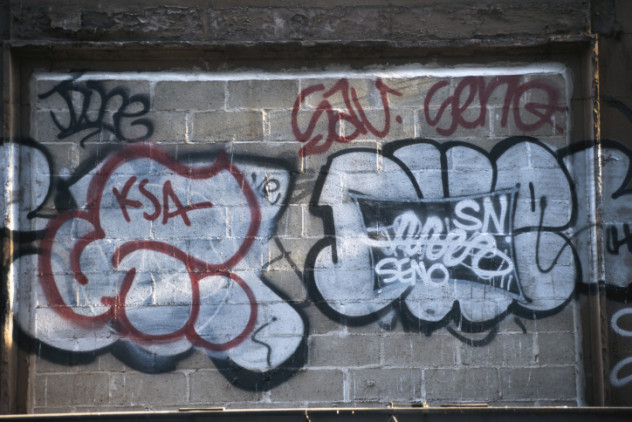
Gang graffiti in Los Angeles is not random vandalism. To those who know how to decipher the secret language, these markings are the “newspaper of the street.” They reflect territorial boundaries, rivalries, and allegiances. Law enforcement officers have even used the secret messages to solve crimes.
Often the names of the gangs themselves are shrouded in code. The monikers are often written abbreviated, such as “ES DKS SGV” for the Eastside Dukes of the San Gabriel Valley. In some cases, gangs have disguised their names by using Roman or even Mayan numbers.
Gang graffiti began in Los Angeles with the emergence of Latino factions over 70 years ago. Initially, it was simply a way of glorifying the organization and marking “turf.” Black gangs quickly contributed to the language. The ‘70s and ‘80s saw the peak of the gang graffiti movement in Los Angeles.
There is a marked difference between gang graffiti and the work of taggers. The latter also engage in a coded language of vandalism, but theirs is based more in outsider art than the criminal underworld. However, differentiation is complicated by the fact that taggers often paint on gang-controlled walls, and city authorities have recently used gang injunctions against tagging crews. To those fluent in the visual cryptolect of L.A. gangs, though, they are worlds apart.
3Parlache

Parlache is a Colombian criminal dialect that was born on the streets of Medellin in the 1980s. Poor urban planning, social unrest, and a failing education system plagued Medellin. Young impoverished men from the countryside flocked to the city and discovered that cocaine was the biggest business in town. This marginalized working class became the cartel’s foot soldiers.
This is not a language of the drug lords. Parlache is the cryptolect of youths in the streets, who needed a coded tongue to cover up sensitive information in their high-risk daily operations. Common features of Parlache include foreign words and giving old words new meaning. For example, the meaning of cocina shifted from “kitchen” to “drug lab.” The innocuous translation of “office” morphed into “a criminal organization in which the orders are passed on from one person to the next so it’s unknown who is directly responsible.” Analysis of the language has been instrumental to law enforcement, who relied on linguistics experts’ work on Parlache to decipher the previously untranslated slang being used by Colombian drug cartels operating within the Iberian Peninsula.
Parlache has become the definitive Colombian dialect, both spoken and written. Parlache words entered the mass media of several Latin American countries and even found a home in the Real Academia Español (RAE) dictionary in Spain. Despite widespread acceptance, though, Parlache remains a stigmatized tongue. Its criminal origins are most loathsome to Parlache speakers who move up the social ladder, who often go out of their way to shed this linguistic echo of a delinquent past. To others, it remains the secret code of a marginalized population that fosters self-determination, playfulness, and solidarity.
2The Da Pinchi Code

Thieves in the UK are using a visual cryptolect to convey information about which houses are worth breaking into. First spotted in Surrey in 2009, the code has since been found throughout England. Often found on pavement in front of the home, the chalked symbols look like the work of a child, but they carry sinister meaning. One such symbol, for example, denotes the presence of a “vulnerable female.” The code also includes symbols that mean “alarmed,” “nervous” or “afraid,” “burgled before,” “good target,” “too risky,” “nothing worth stealing,” and “wealthy.” Police around England have issued warnings to householders and provided pamphlets with translations. They have advised citizens who spot the code to take photos, report the incident, and wipe off the markings.
Their primary concern is that criminals are becoming organized, but in reality, it’s too late. Experts believe that shining a light on this system will stop thieves from using the code, as a secret language is only effective as long as it remains a secret. Undoubtedly, the thieves are already onto a new cryptolect.
1The Aryan Brotherhood Cipher
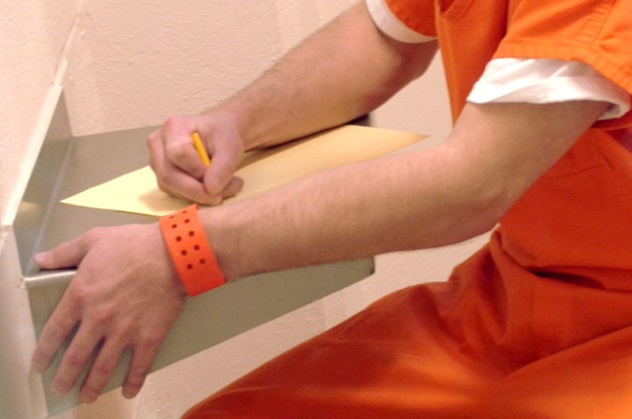
The Aryan Brotherhood is one of America’s most feared prison gangs. Despite having less than 100 official members, they run drug dealing and gambling operations in prisons nationwide. What they lack in numbers, they make up for in extreme violence and terror. Many of their top brass are housed in solitary confinement in maximum security prisons, so they have found elaborate means to communicate with each other. Some of these techniques are surprisingly ancient. T.D. Bingham, one of the Aryan Brotherhood’s leaders, ordered an execution from behind the razor wire of the most secure prison in the nation using a 400-year-old binary cipher code written in invisible ink. His victim was in another high security prison over 2,700 kilometers (1,700 mi) away.
The code was developed by Sir Francis Bacon and used by spies in George Washington’s Revolutionary Army. The invisible ink technique was first referenced by Pliny the Elder over 2,000 years ago and is remarkably low-tech: writing in urine or citrus juice on plain paper. The message will remain invisible until direct heat is applied. The simplicity of the technique blindsided law enforcement.
The Baconian code is a bilateral cipher containing two alphabets. One is regular, but the other alphabet contains crosses, tails, and loops at the bottom of letters. These alphabets combine to form five-letter sequences that translate into individual letters.
Jonathan McGinley served as the Aryan brotherhood’s code master. He was dubbed the gang’s Intelligence and Security Director and is responsible for introducing the secret language to top Brotherhood leadership. His interest in ciphers started when he was young, prospecting for decoder rings in cereal boxes. Another simple but effective technique McGinley employed to send messages within his maximum security prison was circling letters in library books his co-conspirators would later check out.
The brotherhood guards its secrets. It threatens death to those who even admit they are members, so what little we know comes from defectors. However, there is evidence to suggest that not all defectors have been honest. Many claim their defections were a ruse to gain privileges not afforded to other prisoners. As a result, our entire view of this organization might need to be reconsidered.
Abraham Rinquist is the Executive Director of the Winooski, Vermont branch of the Helen Hartness Flanders Folklore Society. He is co-author of Codex Exotica and Song-Catcher: The Adventures of Blackwater Jukebox.
